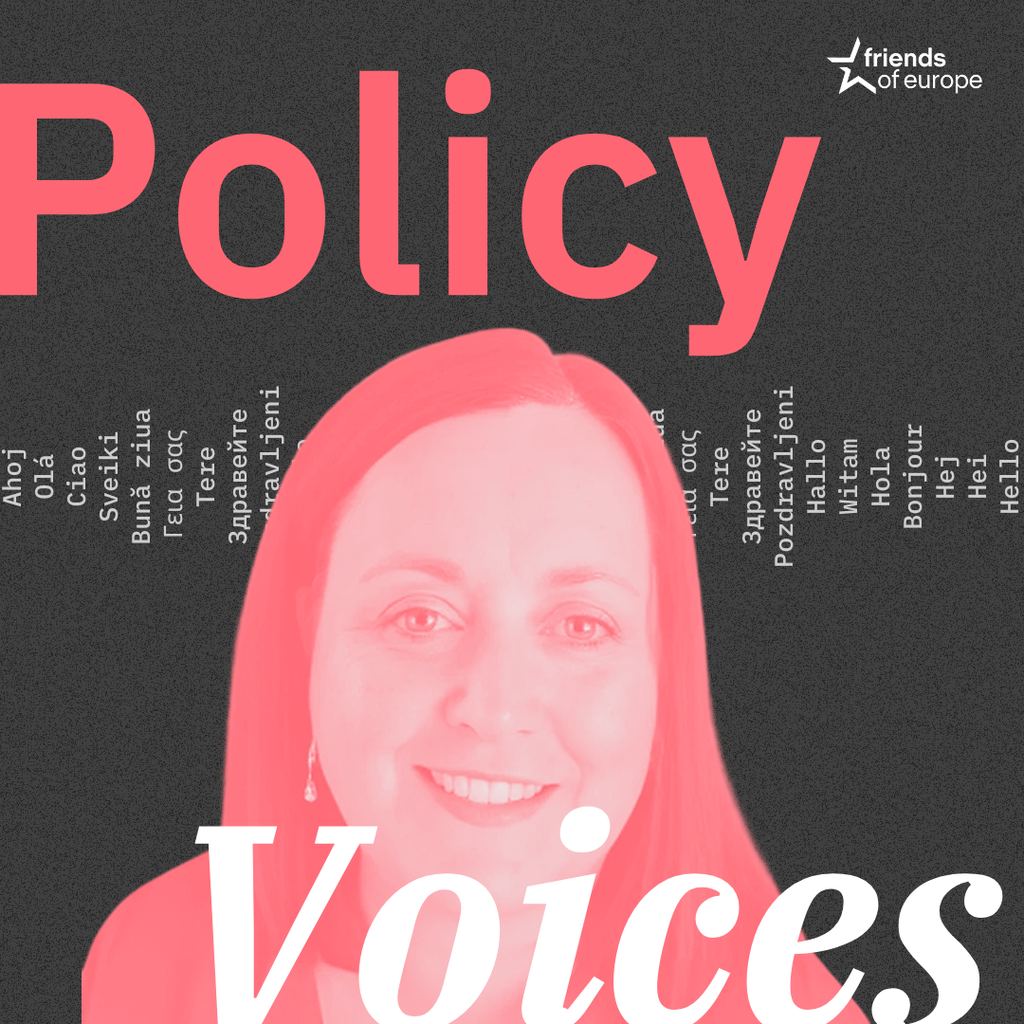Europe's moment: advancing clinical research and health innovation
Next event In person & online

- Area of Expertise
- Sustainable Livelihoods
Sustainable Livelihoods

UK Managing Director at Big Health
Digital therapeutics – evidence-based interventions delivered through software to prevent, manage or treat a medical condition – can transform mental healthcare worldwide. Just as the pharmaceutical industry successfully scaled access to medicines, so too can the digital therapeutics industry scale access to psychological care to meet global needs. This is wonderful news for the 1 in 8 people worldwide living with a mental health condition [1] who currently struggle to access guideline care [2],[3].
However, despite this potential, why is the adoption of digital therapeutics not universal? Why is there international variation, including within Europe [4]?
I believe health systems worldwide must work together to debate, agree, and clearly communicate three things collectively:
European countries are uniquely positioned to lead the way, given their history of rich collaboration in improving patients’ lives
A high bar for what defines digital therapeutics
You wouldn’t give your mother or your friend a pill that ‘might’ work – so why would you do the same with an app?
This statement sounds intuitive; however, in a world with over 300,000 health-related apps [5], [6], it is hard to differentiate between consumer wellness apps and evidence-based digital therapeutics. To help patients and clinicians tell the two apart, we need an agreed set of regulatory and evidence standards.
Let’s not reinvent the wheel. Pharmacological treatments are expected to demonstrate robust evidence of safety, efficacy and effectiveness; digital therapeutics should be no different. One framework that could form the foundation for international standards is the W. H. A. T. criteria developed by Colin Espie, Professor of Sleep Medicine at the University of Oxford and co-founder of Big Health, and Troy Brennan, Adjunct Professor at the Harvard School of Public Health and former Chief Medical Officer of CVS Health [7].
What is W.H.A.T.?
W for work. Treatment efficacy must be supported by adequately powered randomised controlled trials (RCTs) to demonstrate level 1 evidence of change attributable to the digital therapeutic. The trial and its primary and secondary outcomes should be pre-registered and the data should be published following peer review.
H for help. Statistically significant between-group effects of the digital therapeutic over a control condition are important. However, RCT(s) need to demonstrate clinically meaningful differences or clinical remission endpoints relating to the target therapeutic condition, as assessed by clinically accepted and standardised pre-registered measures.
A for accessible. A digital therapeutic must use high-quality technology to deliver a reliable and acceptable patient experience within the target population. There must be evidence that the digital therapeutic can scale safely and effectively to population-level distribution in the real world.
T for trusted. The digital therapeutic must adhere to clinical governance and risk management standards for software as a medical device and privacy and data security certifications, and reflect national and international clinical guidelines for information storage and data transfer.
The W. H. A. T. framework is informed by examples of successful digital therapeutic adoption such as Sleepio, a treatment for insomnia and insomnia symptoms. Sleepio is the first-ever digital therapeutic to receive a positive recommendation from England’s health watchdog the National Institute for Health and Care Excellence (NICE), after being found to be more clinically effective than sleeping pills and cost-saving for the National Health Service (NHS) [8], [9]. NICE’s recommendation was based on Sleepio’s evidence base of 14 Randomised Controlled Trials and independent health economic evaluation [10].
Introduce cross-country standards
Like pharmacological treatments, digital therapeutics are highly scalable and can be made available to large numbers of people in multiple countries. However, a lack of cross-country standardisation inhibits international spread and means patients in one country cannot access treatments that are available in another.
One case study is evidence standards. If a digital therapeutic has been demonstrated safe and effective in peer-reviewed RCTs run in one country, it is reasonable for other countries to recognise that evidence through cross-country collaboration. For example, should a positive NICE recommendation or a permanent DiGA listing be recognised in other countries? What level of domestic evidence is required?
Cross-country standards will avoid duplication of evidence generation and accelerate the international adoption of proven treatments
Create country-specific standards
Once cross-country standards are established, country-specific standards should reflect the idiosyncrasies of the respective healthcare systems.
One case study is data security. Unlike pharmacological treatments, digital therapeutics require data to deliver personalised care and to measure the clinical benefit for patients. Robust standards are essential to ensuring data is kept safe and secure.
International laws on data security are a good starting point, but it is reasonable for countries to expect digital therapeutics suppliers to adhere to national standards that capture national nuance. These standards should be publicly available so suppliers can design and maintain their data security processes accordingly, and so patients can see that digital therapeutics are being rigorously assessed.
What must happen from here?
It may seem counterintuitive to argue that greater adoption of digital therapeutics relies on higher standards for suppliers. However, this approach is essential to avoid adoption for adoption’s sake. Higher adoption is only good news if the digital therapeutics we adopt benefit patients; clearer standards are fundamental to that.
European countries must lead the way by collaboratively agreeing a high bar for what defines a digital therapeutic; what standards should be recognised internationally; and what standards should be set nationally. This work will create a virtuous circle: countries adopt only high-quality digital therapeutics; patients benefit; trust among patients and clinicians grows; adoption grows; suppliers develop new, high-quality digital therapeutics; adoption grows; trust grows; and so on.
This is surely a vision that every healthcare system worldwide can agree on for the sake of human health and well-being.
[1] Mental disorders
[2] WHO highlights urgent need to transform mental health and mental health care
[3] Bridging the global mental health gap – King’s College London
[4] Health app policy: international comparison of nine countries’ approaches | npj Digital Medicine
[5] Beyond validation: getting health apps into clinical practice – PMC
[7] Digital Therapeutics Should Be Regulated With Gold-Standard Evidence | Health Affairs
[8] Overview | Sleepio to treat insomnia and insomnia symptoms | Guidance | NICE
[9] NICE recommends offering app-based treatment for people with insomnia instead of sleeping pills
[10] Research – Big Health | Helping millions back to good mental health
Next event In person & online

Past event In person

Next event In person & livestreamed

Past event Online





Stay informed
We use cookies and similar technologies to adjust your preferences, analyze traffic and measure the effectiveness of our campaigns. Learn more about our privacy policy.